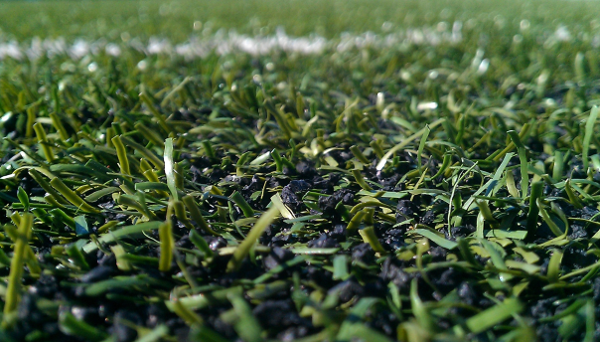Look Into the Environmental Advantages of Opting for Artificial Grass Solutions
The fostering of man-made lawn services presents a compelling possibility to attend to pressing ecological challenges. By substantially reducing water use and decreasing the application of damaging chemicals, these choices not just advertise lasting landscaping however additionally protect local environments.
Water Preservation Conveniences
One of the most considerable benefits of man-made turf is its ability to preserve water. In comparison, man-made turf does not need watering, considerably lowering the general need for water sources.
By eliminating the demand for regular watering, synthetic grass adds to sustainable landscape techniques and helps minimize the environmental influence of too much water intake. The preservation of water prolongs to the reduction of drainage, which can lead to dirt erosion and waterway pollution.
Additionally, the installment of synthetic grass allows house owners and municipalities to allot water resources extra successfully, focusing on important usages such as alcohol consumption water and farming. The shift in the direction of man-made turf not only advertises liable water use but additionally lines up with broader ecological goals focused on preserving natural deposits.
As communities significantly prioritize sustainability, the water preservation advantages of fabricated lawn provide a compelling situation for its adoption in business and residential landscape design jobs.
Lowered Chemical Usage
The shift to synthetic grass dramatically decreases the dependence on chemical treatments frequently utilized in natural lawn maintenance. Conventional turf management generally entails the application of chemicals, plant foods, and herbicides to advertise development and control bugs. These chemicals can pose threats to human wellness, neighborhood wildlife, and the setting, contributing to soil and water contamination.
In contrast, synthetic grass removes the demand for these harmful materials. When mounted, it requires very little maintenance, mostly consisting of regular cleaning and infrequent infill replenishment. This reduction in chemical use not only benefits the instant atmosphere but additionally adds to wider ecological security. By minimizing the release of artificial compounds into the ecological community, synthetic lawn promotes healthier soil and water supply.
Additionally, the lack of chemical runoff related to synthetic grass setups aids protect local waterways from pollution, supporting water life and preserving biodiversity. Arizona artificial turf. As areas significantly prioritize lasting methods, going with man-made lawn provides a feasible service that aligns with ecological conservation goals. Via this change, homeowner can take pleasure in rich green spaces without jeopardizing ecological health, paving the means for an extra sustainable future
Reduced Carbon Impact

Additionally, the setup of artificial grass can lead to significant water conservation. Natural yards call for considerable amounts of water for irrigation, which not only contributes to the carbon impact related to water removal and therapy but also stress neighborhood water resources. In contrast, synthetic grass requires minimal upkeep, calling for no watering, thereby dramatically reducing water usage and its connected power prices.
Furthermore, the long life of synthetic grass adds to its reduced carbon effect. With a life expectancy of approximately 15 years or more, the need for frequent useful site substitutes is decreased, causing much less waste and reduced power usage in production and getting rid of standard lawn alternatives. In general, synthetic grass presents a sustainable alternative for ecologically mindful landscaping.
Habitat Preservation
Habitat preservation is a crucial consideration in the dispute over landscape image source design choices, particularly when contrasting synthetic grass to natural grass. All-natural yard lawns frequently call for extensive upkeep, consisting of the usage of chemicals, herbicides, and fertilizers, which can adversely influence regional environments. These chemicals can leach right into the soil and waterways, hurting indigenous flora and animals and interrupting regional habitats.
Synthetic grass gets rid of the demand for dangerous chemicals, consequently securing neighboring wild animals and keeping the honesty of surrounding environments. The installment of fabricated lawn can lead to the conversion of former lawn locations into even more biodiverse landscapes, such as pollinator gardens or native plant areas, which can sustain neighborhood wildlife.
Eventually, the shift to man-made grass not just preserves water and reduces upkeep initiatives but likewise promotes a much more harmonious partnership between human activities and the natural surroundings, advertising environment conservation in the procedure.
Long-Term Sustainability
Long-lasting sustainability is a vital aspect in reviewing the benefits of artificial grass over conventional grass lawns. Among one of the most considerable advantages of synthetic grass is its sturdiness; it can last as much as 15-20 years with very little maintenance, whereas all-natural turf calls for frequent reseeding and substitute. This longevity minimizes the need for continuous resources, important site such as water, plant foods, and pesticides, which are crucial for maintaining a healthy and balanced turf yard.
Furthermore, synthetic grass contributes to a decrease in carbon exhausts connected with grass care tools. Conventional grass usually call for gas-powered mowers, trimmers, and blowers, every one of which add to air contamination. Phoenix turf companies. On the other hand, synthetic grass gets rid of the need for such equipment, promoting a cleaner setting
Moreover, the production of synthetic grass progressively makes use of recycled products, boosting its sustainability profile. As producers embrace green practices, the ecological footprint of fabricated turf proceeds to lessen.

Verdict
The fostering of fabricated turf solutions offers significant environmental advantages, consisting of significant water preservation, lowered dependence on hazardous chemicals, and a lower carbon impact. Synthetic turf aids in protecting natural environments by decreasing land disruption and promoting long-term sustainability via the usage of resilient products. Collectively, these elements underscore the possibility of synthetic grass to contribute positively to ecological health and wellness and offer a practical alternative to traditional landscaping techniques in a significantly resource-conscious globe.
In contrast, synthetic lawn does not require watering, significantly decreasing the total demand for water sources. By minimizing the release of synthetic substances into the ecosystem, fabricated turf promotes much healthier soil and water systems.
In addition, the setup of fabricated grass can result in substantial water conservation. In comparison, synthetic turf requires minimal maintenance, calling for no watering, thus substantially lowering water use and its associated power expenses.
